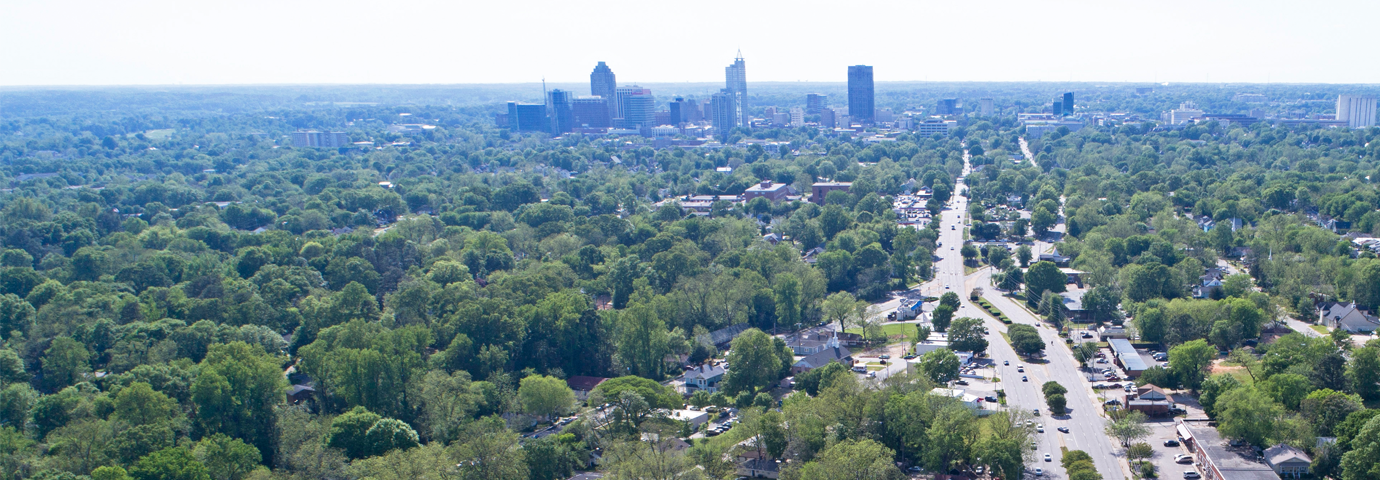With the recent groundbreaking ceremony to kick off construction of the New Bern Avenue Bus Rapid Transit (BRT) line earlier this November, many may be wondering what this means for this road and the surrounding neighborhoods.
BRT is a form of public transportation that was approved by voters in 2016 as part of the Wake Transit Plan. The New Bern Avenue line is the first of four planned for the region and is slated to be operational in 2025. For BRT to be successful – meaning that it’s a convenient and efficient way for people to get from their homes to everyday places like work, school, and the grocery store – it is necessary to build up residential and commercial opportunities along the transit route. The city plans to incentivize this mixed-use development that encourages affordable housing through a zoning tool called a Transit Overlay District.
Zoning overlay districts are a set of additional zoning regulations that are applied over existing zoning. The goal of a Transit Overlay District or TOD is to encourage transit-oriented development, or development around transit systems that make these areas walkable and affordable while increasing and encouraging transit ridership.
Unlike many types of overlay districts that hinder development through exclusionary zoning and upholding the status quo – such as minimum lot sizes, building types, and other features that keep housing more expensive – the TOD is meant to encourage density and growth around public transit by legalizing additional residential building types, discouraging auto-oriented uses, and requiring pedestrian safety standards like wider sidewalks. Most importantly for New Bern Avenue and the additional planned BRT routes, the TOD will incentivize affordability in residential developments through an “Affordability Bonus” that allow developers to build more units if they make a percentage of the units affordable.
While many agree that having affordability baked into new development is a huge win for our rapidly growing city, there are also concerns about gentrification and displacement when an area becomes more desirable for new development. In truth, when there is an influx of investment to an area it can accelerate gentrification, which is why it’s important for the city to funnel this investment into measures that protect vulnerable homeowners and renters who are already being impacted regardless of the rezoning. One mitigation measure that The City of Raleigh has implemented, in partnership with Rebuilding Together of the Triangle, is the Raleigh Home Revitalization Program, which was created to help existing homeowners vulnerable to displacement rehabilitate and maintain their homes. This program is expected to serve 200 households and is funded as part of the Affordable Housing Bond, which 72% of Raleigh residents voted to approve in November 2020 – the highest approval in bond history! The goals of the program include helping lower income individuals and families with costly repairs and maintenance, allowing seniors to age in place, and providing accessibility measures for people living with disabilities. Learn more about the program and eligibility requirements here.



